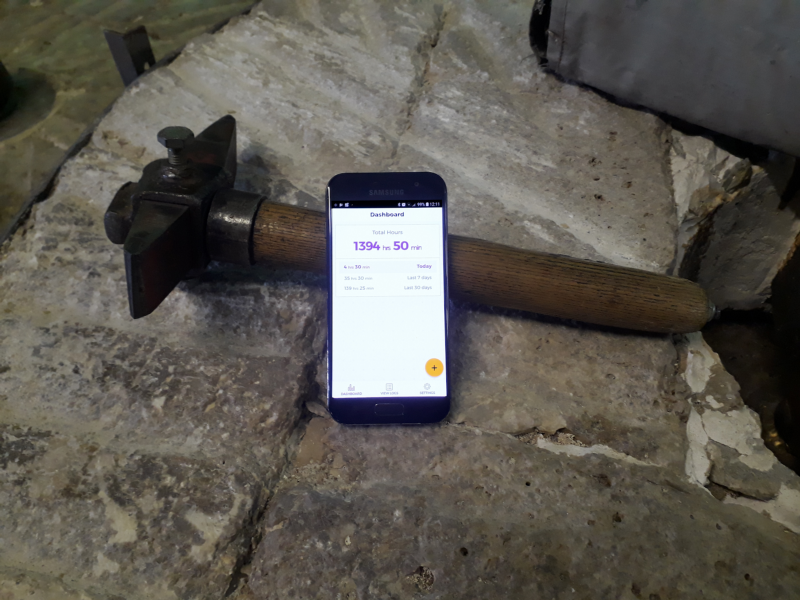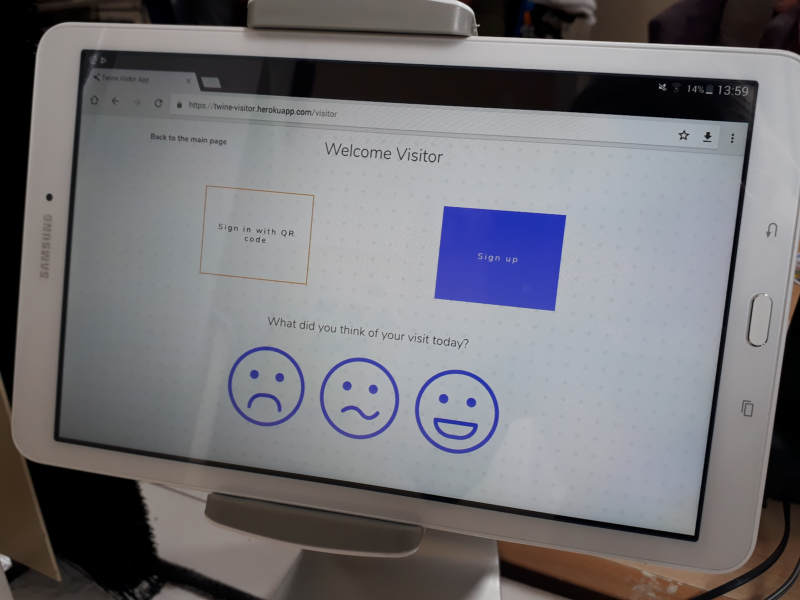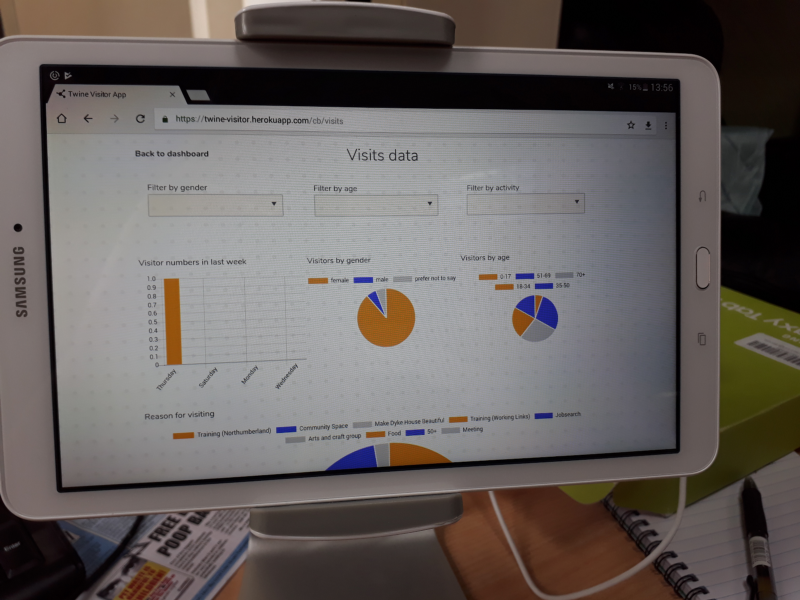by Rebecca Radding
How one nonprofit saved money while building a better digital platform for their users
An interview with Power to Change project manager Sonja Wiencke and Founders and Coders graduates Elias Malik and Aisha Nasir
Since 2016, Power to Change has been developing Twine, a digital platform helping community businesses deliver change in their communities. At first, Power to Change had a hard time figuring out how to make sure the software met the needs of busy changemakers.
In this interview, you’ll hear from Sonja Wiencke, the original Twine project manager, and Elias Malik and Aisha Nasir, the Founders and Coders graduates who helped Power to Change build a better tool.

Rebecca: Let’s start with a bit of background. Could each of you tell me a bit about your professional trajectory?
Sonja: Of course. Though my background is in diplomacy, after finishing my masters I decided to go into the social sector, and started by joining the Charityworks Graduate Scheme. While on the scheme, I noticed that charities of all sizes struggle to make sense of their data. I had never seen myself as a data or analysis guru, but realised that I could contribute to the sector by sharing the skills I do have in this area. When the job as Twine project officer came up, I jumped at the opportunity to improve charities’ access to data on such a large scale.
Rebecca: Sonja, could you tell us a bit about Twine? What exactly does it do?
Sonja: Twine is a platform for businesses and charities learning from data, built with funding from Power to Change, an independent trust that supports community businesses across England.
We have been working with Founders and Coders to develop the part of this platform that helps community or social businesses collect the data needed for the daily running of a business, such as the work contributed by volunteers, and the number of people visiting their services.
Rebecca: Elias and Aisha, what about each of you?
Elias: I studied maths at university, then spent three years as a control engineer in the space industry. It was a really great technical education but for various reasons I decided I wanted to change directions, so I looked to software development. After I finished the Founders and Coders course in 2016, I spent about a year freelancing with a company called IP Cortex.
That was around the time that Founders and Coders was setting up its programmes in the Middle East. I decided to take a little time off from development proper so that I could go out and help. I spent the summer of 2017 facilitating the course for the second Gaza cohort, with a lot of help from the first cohort, the local staff and some mentors from London. When I came back to London I worked remotely for a few months with a team of four Gazans from the first cohort.
Aisha: I studied film production at university, then earned a postgraduate certification in education in Primary Education and taught as a primary school teacher for two years. When coding was added to the curriculum in the UK, I took a job as an IT consultant in schools teaching and planning their computer science curriculum.
Though I loved working with young people, I grew frustrated with the restrictions the school curriculum places on teachers, so I left the classroom to pursue a career as a developer. I did Founders and Coders and then got hired to facilitate the next cohort in London. I did this while working part-time supporting the CAST Digital Fellowship. My team designed and built prototypes for charities to solve organisational challenges, in the same style as the hack day Sonja originally attended. When the project finished, I went abroad to mentor at our Nazareth and Gaza programmes.
Rebecca: Sonja, getting back to Twine, how did the idea for it come about?
Sonja: Two years ago, our head of evaluation and impact at Power to Change decided to invest in building a better data tool. We needed this for our own research and policy work, and also wanted to enable small community organisations to collect important data for themselves.
Because Power to Change is a relatively small grant-making organisation, without in-house expertise in software development, we turned to software development agencies - several, in fact - who each built a different part of the platform. But this turned into a real headache, because each group of developers wrote the code for their part of the project using different frameworks, which in some cases weren’t particularly compatible.
Rebecca: That sounds really frustrating!
Sonja: And it was! Agencies and their developers also work on a lot of different projects at the same time, so they don’t always have time to fully get to know the users and their requirements for each of them. Furthermore, our users aren’t the people that app developers tend to have in mind - they are often more comfortable with paper spreadsheets than with apps, and don’t have much time to invest in learning about new technologies.
Finally, because agencies work on so many projects at the same time, it can take a while for them to schedule in bug fixing, so sometimes when our users reported a bug, they had to wait for several weeks to see it fixed.
Rebecca: How did you originally encounter Founders and Coders?
Sonja: Out of pure luck! Just two weeks after I started, my manager at the time suggested I attend a “Charity Hack Day” hosted by Yoti and supported by Founders and Coders. I went to the event with a clearly-defined problem in mind: our users wanted to measure visitor footfall to their community businesses. My hope was that we would come up with an app idea that could become part of the Twine platform, which already included an app for volunteers and related management dashboard.
Power to Change had already tried several ideas that didn’t work out, so my challenge for the day was to work with the developers from Founders and Coders on a technical solution that would be simple, collect valuable data, and be easily accessible to people with limited knowledge of technology. The students we worked with were absolutely amazing and had such good ideas! By the end of our day together, the idea of using a tablet and scannable “membership cards” with the Twine visitor app was born on post-its.
Rebecca: It’s great to hear that you found this process useful! As a matter of fact, Founders and Coders recently launched the Tech for Better programme for nonprofits who want to build digital services, based on the success of the hack day you attended and others like it.
Sonja: That’s great news.
Rebecca: So, Sonja, what were your first impressions of Founders and Coders?
Sonja: We ended up working with three students during the final three weeks of the sixteen-week bootcamp, in which they built an MVP - a minimum viable product, or the most basic version that would allow me to test the app with users of the visitor app. They were very motivated, and genuinely keen to produce a good app. They also delivered on their promises and built something that worked well enough to convince Power to Change to invest in full development.
Rebecca: What happened next? Tell me about the transition from MVP to a full product.
Sonja: We worked with a team of three Founders and Coders developers over the seven months following their graduation, including Aisha, up until we launched the visitor footfall app in May, which has been really well received by our users.

Aisha: I actually worked on the project part time whilst in Gaza. It was my first JavaScript job and I really enjoyed working on the codebase.
Sonja: Aisha’s being modest. In my experience, people from Founders and Coders are not your stereotypical “coding nerds” who live in their mum’s basements and talk to computers but not to humans. Founders and Coders graduates are a very helpful, open, creative group of people, who are very interested in the code they write but equally interested in the real-world problems that their technology solves.
Rebecca: Sonja, how did you convince the other stakeholders in your organisation that you should continue with Founders and Coders?
Sonja: That was actually a very easy sell - I’m afraid stakeholders at Power to Change were mostly convinced by the fact that switching from agencies to two Founders and Coders developers would save us several tens of thousands of pounds in 2018 alone. The fact that the Founders and Coders team was demonstrably faster in both development and bug fixing was also a plus point.
Rebecca: Elias, when did you join the Twine team?
Elias: After the initial team built the MVP, they began looking for a more experienced developer to join the project. Aisha approached me, and I decided to join the project part-time. Once I better understood the client and the ambition that they had for the product I became even more interested.
Rebecca: Sonja, tell me about the transition from the original student project to developing the full product.
Sonja: Sure! In June, we took on Elias and Aisha as full-time Twine developers. That means they are now responsible for maintenance on the visitor footfall app, including mobile and web versions and the corresponding back end originally produced by agencies, as well as a mobile app for volunteers and related management dashboard, which had been built by the agencies I mentioned earlier.
They have spent quite a lot of time since then transforming the code from all of the separate Twine apps into something that is more integrated and can be maintained by a small team in the long run.

Rebecca: Elias and Aisha, tell me about your experience with the project.
Aisha: It’s been super interesting being involved from the beginning and helping to design the platform. I also enjoy working as a full-stack developer in a small team as it means I am able to contribute to all of the codebase. I’ve also appreciated the opportunity to learn new technologies.
Elias: On my part, I’ve enjoyed the mix of legacy (working on an existing codebase that someone else has already worked on) and greenfield (from scratch) work.
Developing the product has also presented some interesting user experience (UX) challenges, because many of its users are uncomfortable with technology, blame themselves if something goes wrong, and give up on using it altogether!
Rebecca: What do you mean by “uncomfortable with technology”? You’re not talking about people checking Facebook and WhatsApp.
Sonja: I’ve got a story for this one! I went to visit one of the clients a couple of weeks after they started using the Twine app to track volunteers’ time, and I met a couple of volunteers who said, “You know the app doesn’t exist”. The reason they couldn’t find the app on the App Store was that they weren’t connected to the Internet (they didn’t have data on their phones)! I gently explained that they needed to connect to the Internet to access the App Store, so one of the women took a phone charger out of her bag and said, “now we can connect to the internet”.
At at least 30% of trainings I have had to explain to people that you download an app from an App Store. How do Elias and Aisha design for people who don’t even know how to find the app? When we talk about the digital divide, this is what we’re actually talking about.
Elias: Here’s another example. The original plan for tracking visitor footfall involved visitors scanning a QR code that is kept on a phone or print-out. It turns out that idea doesn’t translate for a lot of our users, who either didn’t want to enter an email address, don’t have an email address, or just can’t remember it! To cope with this issue, community businesses were creating fake accounts and keeping QR codes at the front desk for repeated scanning, and their data was unreliable.
So we came up with alternative ways for front-of house staff to register visitor footfall, such as bulk registrations to keep track of the broad demographics of who comes in. It’s not ideal, but it’s better than fake data.

Rebecca: Sonja, tell me about the experience of working with the Founders and Coders developers and what, if anything, made it different to previous experiences with developers.
Sonja: On a day-to-day basis, the difference they have made to the Twine project is immense! Our users now get their bugs fixed within a few hours, not weeks as previously. We can be more flexible with our feature changes and shift priorities around when needed. And most importantly, because our two developers work on Twine full-time and don’t have to juggle multiple projects in a day, they have developed a very good understanding of our user needs, and they can respond to those.
Rebecca: Elias and Aisha, how would you describe your working relationship with Sonja?
Elias: I think I’ve been the beneficiary of the good faith that my predecessors have built up in the earlier stages of the project. There is an implicit trust that manifests in several ways, not least of which is open and direct communication. Sonja (and now Edward, who has taken over for her) trusts that we’re looking out for the good of the product, so if bugs come up, I don’t worry that I’ll be blamed for something - a bug - that’s just part of the development process.
Sonja: My partner is actually a software developer, so I knew if we were building software there would always be bugs. Just when you think you’ve found them all, your customers will find another one! But sometimes users don’t understand this - they think, if it’s “done”, it should work, and if it doesn’t, the product is bad.
Why do you think your computer sends you software updates? Even big companies like Apple and Microsoft are constantly finding bugs and fixing them and asking you to update your computer.
Elias: Think about it this way. There’s a fundamental difference between the nature of digital products and concrete objects. A table is a table - a static object - whereas a digital product is always evolving. Next week or next month it could take a very different shape than it did today.
Rebecca: What are some of the qualities that made Sonja such an outstanding project manager?
Aisha: She was just the best, always friendly and easy to talk to. Sonja has also given us as a developer team the autonomy we need.
She understands the value of planning and has taken time to meet with us to discuss gathering requirements, which is when we try to squeeze as much information about the users and what the software needs to do out of Sonja’s head as possible. We then use that information to come up with an overarching plan for how the software will be structured and designed.

Rebecca: Sonja, I’d love to hear some reflections on how relationships between a nonprofit client and digital agencies play out in the real world, how they sometimes go wrong and why.
Sonja: I think the problem is really that “the real world” looks very different to a non-profit than it does to a software developer. It is not very easy to translate concepts such as “measuring social impact” into something tangible enough for a developer to make a decision about, for example, on whether a data input field needs to be optional or required. At the same time, some people in the non-profit sector have such little understanding of technology that conversations about technical decisions can be quite challenging. And when clients do have doubts, they may not question developer decisions even though the developers themselves were just making a guess.
Agencies have a range of different clients at the same time, and since nonprofits typically pay lower rates, they are unlikely to be an agency’s highest priority. Some agencies therefore do not normally take the time to fully understand all user requirements and co-create solutions with their clients.
Rebecca: How do you the think the relationship between your organisation and Founders and Coders was able to avoid those pitfalls?
Sonja: Elias and Aisha are not obliged to work on half a dozen projects at the same time, and therefore have time to properly focus on the Twine project and its very specific user needs. They were also patient enough to explain all technical decisions in lay terms so that I could understand in each case the implications of each choice for the user experience.
They were also significantly more transparent than most developers I’ve encountered, and we had all activities and all our discussions on Github.
Rebecca: What’s next for Twine, and for you Sonja?
Sonja: Twine will always need a small team of developers to support it, and continuously adapt to user needs. We are glad that we have our Founders and Coders team to do that, and hope we can continue to work with them. As for me, I’ve actually moved on to a new role, and have been replaced as the Twine project manager by Edward.
Rebecca: Elias and Aisha, what’s next for you?
Aisha: Hard to say, I am really enjoying the project at the moment.
Elias: Scaling Twine!
Tech for Better is a pro-bono programme for nonprofits to design, test and build new digital service ideas using developers in London and Gaza, supported by Intersticia. To learn more, visit www.foundersandcoders.com/techforbetter.
